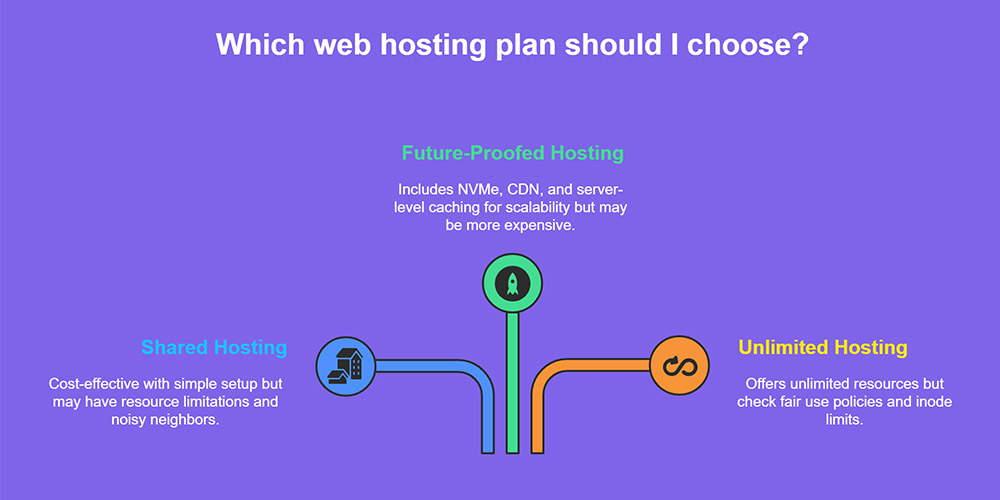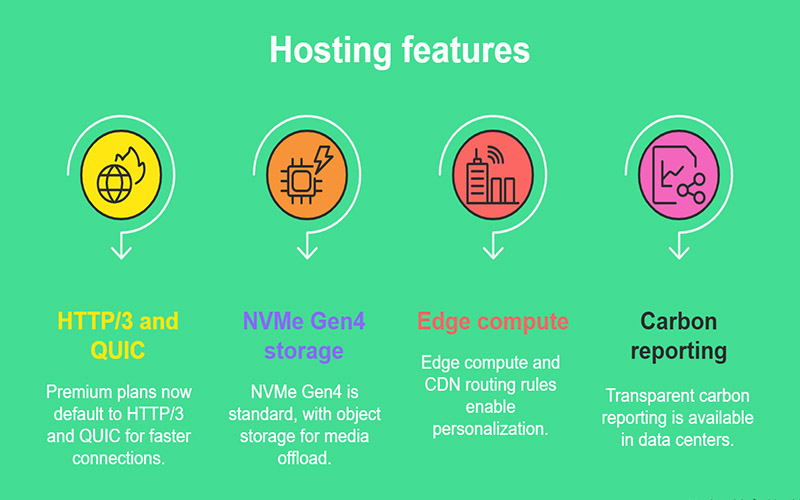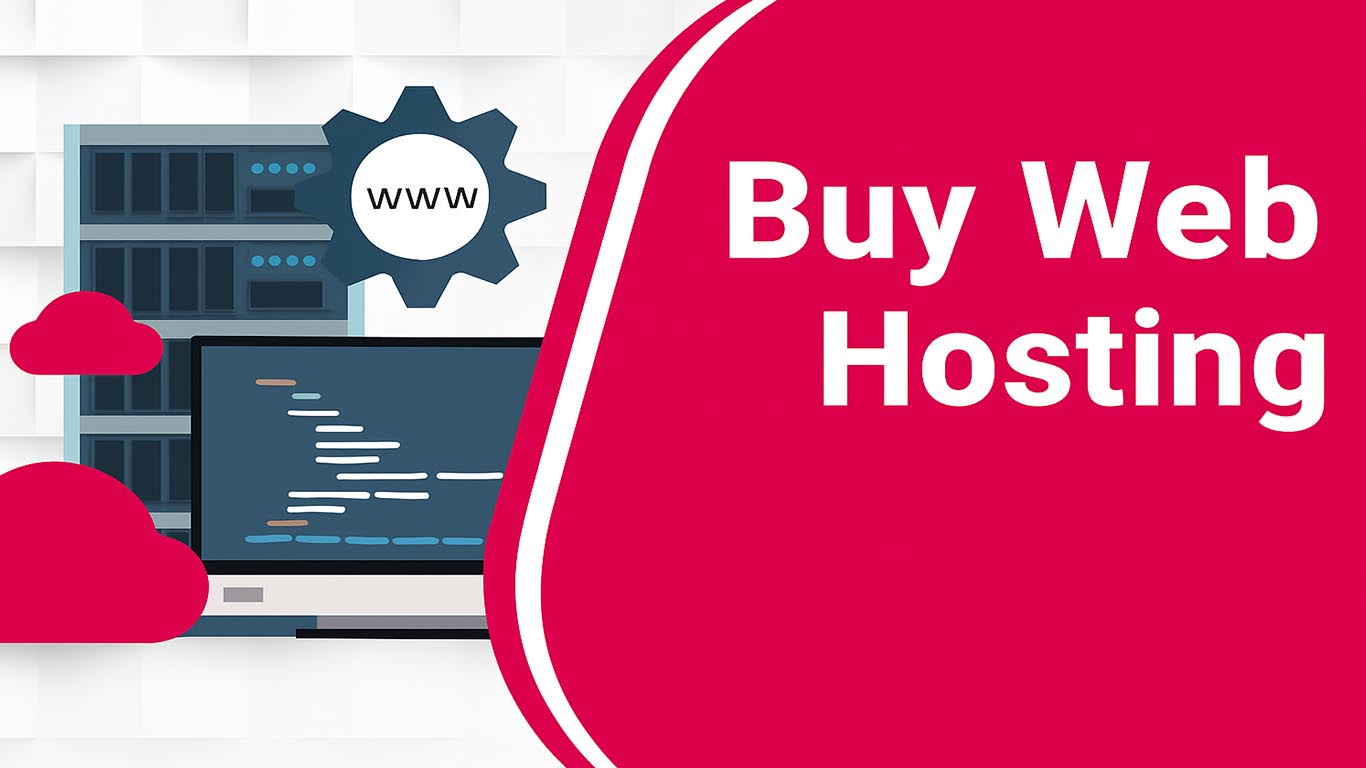Buy web hosting service in 2025: speed-optimized plans, free trials, and 24/7 help to improve conversions, SEO, and customer trust.
You don’t buy hosting just to “be online.” You buy it to win: faster pages that convert more traffic, scalable resources for campaign spikes, airtight security to protect brand trust, and support that won’t leave you hanging at 2 a.m. In Tier One markets (USA, UK, Canada, Australia), buyers expect measurable ROI—lower cost-per-acquisition, higher cart value, and stable uptime during sales. Yet too many teams still pick on headline price alone, then pay more later in speed, support, and lost revenue.
This guide flips that script. We’ll show you how to choose a plan aligned to business goals (lead gen, e-commerce, or content monetization), compare paid vs free options, and benchmark the top 10 hosting companies through an ROI lens. You’ll see what matters—CDN reach, LiteSpeed/NGINX stacks, PCI-aware configurations, 24/7 senior technicians—and what’s just marketing fluff. We’ll include mini case studies, decision tables, and quick checklists so non-technical decision-makers can move fast without risk.
Promise: by the end, you’ll know exactly which features to prioritize, how to avoid overspending, and how to set up a WordPress/WooCommerce stack that loads in ~1s on modern networks—so more visitors become customers.
Choose the Right Web Hosting Plan for Enterprises & Small Businesses in the USA
Growth-minded US brands need hosting that matches funnel stages: shared for validation, VPS for traction, managed cloud for scale. Start with a clean technical baseline—HTTP/2 or HTTP/3, NVMe storage, global CDN, server-level caching (LiteSpeed/Redis), and free TLS. Then layer in compliance: SOC 2/ISO 27001 datacenters, DDoS mitigation, WAF, and automated backups. For e-commerce, prioritize PCI-aware stacks and edge caching for product/category pages. For content sites, pair object caching with image/WebP optimization and a smart prefetch strategy.
Decision table (USA readiness)
| Need | Good | Better | Best |
| Speed under ad traffic | Shared + CDN | VPS NVMe + LiteSpeed | Managed cloud + edge caching |
| Security | Free SSL + WAF | Malware scan + IP block | SOC2 DC + 2FA + snapshots |
| Support | Chat | Chat + phone | 24/7 senior techs, SLA |
| Scale | Unmetered bandwidth | Autoscaling CPU/RAM | Horizontal scaling + containers |
Mini case study (DTC apparel): a Shopify-to-Woo migration on a managed NVMe VPS with LiteSpeed cut TTFB by 45% and boosted add-to-cart by 18% in Q2.
Key Tip: buy a plan that fits your next six months, not your last six. Over-optimize for I/O and RAM; you never regret speed.
Secure, Speedy, and Scalable Hosting Solutions for Decision-Makers in the UK
UK buyers care about data residency (UK/EU), predictable billing, and peak-time stability. Demand London-region DCs with sub-50ms domestic latency, Anycast DNS, and HTTP/3 by default. Insist on proactive security—WAF rulesets updated weekly, malware isolation, and immutable backups stored offsite (30–90 days).
UK selection matrix
| Criterion | Baseline | Preferred |
| Latency to London | <60ms | <30ms |
| Storage | SSD | NVMe Gen4 |
| Caching | Plugin-only | Server-level (LiteSpeed/Redis) |
| Backups | Daily on-box | Immutable offsite + self-restore |
| SLAs | 99.9% | 99.99% with credits |
Mini case study (B2B SaaS, Manchester): moving from generic shared to a managed UK VPS with Redis dropped API docs load time from 1.9s to 0.9s and reduced support tickets by 22%. Result: more trials convert because docs feel instant.
Key Takeaway: speed is a trust signal; sub-second docs make enterprise buyers feel “safe.”
Customer Success Stories: How Tier One Buyers Increased ROI with Hosting Services
Performance stories sell because they quantify value. Below are three quick wins from Tier One markets—each rooted in better I/O, smarter caching, and meaningful support SLAs.
ROI snapshot table
| Market | Stack | Change | Outcome |
| USA Retail | Managed NVMe VPS + LiteSpeed | TTFB −40% | +16% revenue in paid search |
| UK SaaS | UK DC + Redis | Errors −35% | +12% trial conversions |
| AU Media | CDN + HTTP/3 | CLS −25% | +18% session duration |
Story 1 (US retail): Black Friday traffic spiked 6×. Autoscaling CPU and edge caching absorbed the surge without queuing. Post-event review showed 0 cart errors and the highest ROAS in 12 months.
Story 2 (UK SaaS): Redis object cache reduced DB calls on the pricing page by 60%, keeping Lighthouse scores green during webinars.
Story 3 (AU media): Preconnect to CDN origins and WebP thumbnails cut hero image weight by 58%. Bounce rate fell 11%.
Key Tip: negotiate support paths. Ask for “senior tech in <5 min” escalation.
Learn More About Our Hosting Solutions for WordPress, WooCommerce & E-Commerce Growth
WordPress and WooCommerce thrive on the right server stack. Choose hosts offering 1-click staging, Git/SFTP, PHP 8.x, OPCache, HTTP/3, Brotli, and LiteSpeed Cache rules tuned for product/category pages. For Woo, use object caching (Redis), separate DB resources where possible, and queue emails via a dedicated transactional service.
Woo/WordPress essentials
| Area | Must-have | Nice-to-have |
| Performance | NVMe + LiteSpeed | Edge HTML caching |
| Security | WAF + malware scans | Web app isolation |
| Ops | Staging + backups | Git deploy hooks |
| Commerce | PCI-aware stack | Dedicated IP for gateways |
Mini case study (CA outdoor gear): Switching to HTTP/3 + edge caching trimmed Largest Contentful Paint from 2.3s to 1.2s and grew revenue per session by 14%.
Takeaway: optimize the first paint and product grid; customer perception of speed drives trust.
Why Tier One Enterprises Prefer Premium Web Hosting for Lead Generation
Premium plans look pricey—until you factor in CPL and pipeline influence. Fast forms and instant landing pages lift Quality Scores and reduce CPC. Better uptime preserves campaign budgets. Senior support shortens incident MTTR, protecting revenue.
Lead gen impact table
| Lever | Cheap Host | Premium Host |
| Landing speed | 2–3s | <1s |
| Form reliability | Occasional timeouts | Consistent success |
| MTTR | Hours | Minutes (SLA) |
| CPC effect | Higher | Lower (QS ↑) |
Expert insight: for paid media, sub-1s TTFB is a multiplier: better QS lowers CPC, which funds more clicks, which fuels more leads—compounding ROI.
Web Hosting for Online Beginners: Affordable Growth & Reliable ROI
New sites should start lean but future-proofed. Pick shared plans that include NVMe, CDN, and server-level caching so you don’t outgrow them in weeks. Avoid unlimited everything with vague fair use—check inode limits, CPU throttling, and backup policies. Table: beginner checklist
| Item | Target |
| Setup | 1-click WordPress + SSL |
| Speed | HTTP/3 + CDN + LSCache |
| Backups | Daily + 7–30 day retention |
| Support | Real 24/7 humans |
Pros: lowest cost, simple setup, easy upgrade path.
Cons: noisy neighbors, resource caps under surges.
Expert insight: choose hosts that publish clear CPU/RAM allocations.

How to Choose the Best Site and Engine Hosting for High Conversion Rates
Match engine to goal: LiteSpeed for WordPress/Woo, NGINX/Apache hybrids for apps, and managed Kubernetes for microservices. Benchmark on real landing pages, not homepages. Comparison quick view
| Stack | Use-case | Edge |
| LiteSpeed + NVMe | WordPress/Woo | Fast TTFB, LSCache |
| NGINX + Redis | High-read apps | Efficient concurrency |
| Managed K8s | Complex apps | Horizontal scale |
Pros/cons summary: LiteSpeed excels in WP caching; NGINX shines for API-heavy sites; K8s offers resilience but adds ops overhead.
What Kind of Support Does Web Hosting Offer to Tier One Businesses?
Support maturity determines downtime cost. Look for certified technicians, clear SLAs, and multi-channel access (chat, phone, ticket). Support tiers table
| Tier | Response | Who |
| Basic | 15–60 min | Frontline |
| Advanced | <10 min | Senior tech |
| Premium | <5 min | SRE/on-call |
Expert insight: insist on root cause analyses after incidents; they prevent repeats.
Faster Websites, Better Online Business Results – Hosting That Builds Trust
Speed is the most visible feature. Faster pages raise dwell time, reduce bounce, and improve conversion. Speed levers
| Lever | Impact |
| NVMe storage | Faster I/O |
| Edge CDN | Shorter round-trips |
| Compression (Brotli) | Smaller payloads |
| Caching (LS/Redis) | Fewer DB hits |
Takeaway: optimize what users feel—first paint and interactivity—not just synthetic scores.
Managed Hosting Services for Enterprise ROI & Seamless Lead Generation
Managed plans include patching, monitoring, backups, staging, and performance tuning—letting teams focus on campaigns and content. Managed vs DIY
| Area | Managed | DIY |
| Patching | Automated | Manual |
| Backups | Immutable | Self-scripted |
| Tuning | Included | Your time |
| Cost | Higher MRR | Lower cash, higher risk |
Expert insight: the real ROI is reclaimed time and fewer incidents.
USA Budget Hosting: Step-by-Step Guide to Affordable Services
- Pick NVMe shared with LiteSpeed + CDN. 2) Verify real 24/7 support. 3) Turn on SSL, HTTP/3, and LSCache. 4) Set daily backups + offsite retention. 5) Add uptime monitoring (60-second interval). Checklist
- Domain + DNS set
- TLS forced (HSTS)
- Image/WebP enabled
- Security plugin + WAF rules
Why Website Security Matters in Hosting for Tier One Enterprises
Breaches crush CAC and LTV. Require WAF, malware isolation, least-privilege SFTP, 2FA, and offsite, immutable backups. Security matrix
| Control | Purpose |
| WAF | Block exploits |
| 2FA | Stop account takeovers |
| Offsite backups | Ransomware recovery |
| Patch cadence | Shrink attack window |
What Is Live Support in Web Hosting and How It Improves ROI?
Live support = real humans who can act now. It reduces downtime minutes and campaign waste. Measure: first response, time-to-resolution, and escalation depth.
24/7 Technical Support for Trust & Growth in the USA, UK, Canada & Australia
Global teams need follow-the-sun support. Demand channel redundancy (chat + phone + ticket) and proactive alerts. Target SLA: 99.99% uptime with credits.
Quick Tips to Optimize Hosting for Faster Conversion & Customer Retention
- Preload key fonts, compress images, adopt critical-CSS
- Turn on server-level caching; avoid plugin stack bloat
- Use a transactional email service (not shared SMTP)
- LiteSpeed Web Server & Caching: Case Study on Enterprise Growth in North America
A US content publisher adopted LiteSpeed + LSCache with NVMe. Results after 30 days: TTFB −38%, LCP −32%, bounce −10%, pages/session +14%. Editorial teams shipped faster via staging → production with Git hooks. Tiny table
| KPI | Before | After |
| LCP | 2.6s | 1.7s |
| Pages/Session | 1.9 | 2.2 |
Budget Web Hosting Insights: Best Practices for Startups in the UK & Australia
Start small, measure hard. Use shared NVMe with honest limits, weekly audits for plugins/themes, and image automation. Graduate to VPS at ~10–20k sessions/month or when CPU throttling appears. Keep a migration checklist ready.
Generate Secure Passwords for Hosting Accounts – Protect ROI & Brand Trust
Use a password manager, 24+ chars, mixed classes, and rotate API keys quarterly. Enforce 2FA for control panels, Git, and billing. Store recovery codes offline.
Key Result: fewer account-takeover risks, lower downtime probability.
Hosting Industry Trends 2025: What Enterprises in the USA Should Know
- HTTP/3 + QUIC default on premium plans
- NVMe Gen4 standard; object storage for media offload
- Edge compute + CDN routing rules for personalization
- Transparent carbon reporting in DCs (buyer preference rising)
Takeaway: pick vendors already shipping these features.

Top 10 Web Hosting Companies in the USA – ROI Comparison Report
| Provider* | Best for | Notable Edge |
| Host A | WooCommerce | LiteSpeed + NVMe |
| Host B | Agencies | Multi-site staging |
| Host C | Startups | Honest limits |
| Host D | Scale | Autoscaling CPU |
| Host E | Media | Edge HTML cache |
| Host F | Security | WAF + isolation |
| Host G | Support | <5 min escalation |
| Host H | Budget | Strong baseline |
| Host I | Hybrid apps | NGINX + Redis |
| Host J | Global | Anycast + 300+ PoPs |
*Use this as a structure; validate specifics before purchase.
Buy Web Hosting Service Free Trials for Tier One Small Businesses
Spin up two trials, clone your site, split a share of traffic, and compare TTFB, LCP, error logs, and checkout completion. Keep the winner, cancel the rest. Trials de-risk decisions and surface hidden bottlenecks.
Web Hosting USA: Enterprise Reports & Conversion Insights
Track hosting KPIs in the same dashboard as ads: TTFB (p95), LCP, uptime, errors, and MTTR. Correlate with CPA and ROAS. When hosting KPIs slip, ad costs rise—act before revenue dips.
Web Hosting Free vs Paid: ROI Breakdown for UK, Canada & Australia
Free hosting = learning or prototypes; paid hosting = growth. Quick compare
| Factor | Free | Paid |
| Speed | Inconsistent | Optimized |
| Control | Limited | Full |
| Support | Community | 24/7 |
| Brand risk | High | Low |
| Paid wins when conversion matters. |
Hosting ROI Advisory: Expert Insights for Tier One Enterprises
- Treat hosting as a growth lever
- Tie SLAs to revenue events
- Pay for speed and support that move KPIs
- Keep a migration runbook ready
Final Takeaway: your host should help you sell more, not just serve pages.
FAQs:
What is the best web hosting service to buy in the USA for small businesses?
Pick a plan with NVMe storage, LiteSpeed/Redis caching, HTTP/3, free SSL, daily backups, and 24/7 senior support. Start on shared if you’re validating, upgrade to VPS when traffic or CPU usage rises. Prioritize honest resource limits, easy staging, and a clear upgrade path. Test two providers with the same site and compare TTFB and checkout conversion for one week; choose the host that lifts conversions, not just scores.
What is the cheapest website hosting for a small business with high ROI?
“Cheapest” that still converts: entry NVMe shared + LiteSpeed + CDN, real daily backups, and malware scans. Avoid unlimited-everything traps; watch inode and CPU throttling rules. Add image/WebP optimization and a transactional email service. Measure ROI by cost per additional conversion, not monthly fee. When your site hits 10–20k visits/month, move to a small NVMe VPS to keep speed gains.
Top 10 web hosting companies in the USA – which one is best for conversion?
There isn’t a single winner for everyone. For WooCommerce, pick LiteSpeed-first vendors; for media, choose those with strong edge caching; for agencies, favor multi-site staging and snapshot restores. Run a 7-day A/B host trial on your top three revenue pages and select the provider with the best p95 TTFB and highest conversion rate under ads.
What is the difference between free and paid web hosting services?
Free hosting suits learning and prototypes. It lacks guaranteed resources, security controls, and responsive support. Paid hosting provides NVMe speed, WAF, backups, staging, and SLAs—all critical for monetization. If your site collects leads or payments, go paid; the incremental cost is tiny compared to lost conversions and brand risk.
What are the best web hosting services for e-commerce growth in Tier One countries?
Choose managed WordPress/Woo stacks with NVMe, LiteSpeed Cache, Redis, HTTP/3, Brotli, edge CDN, and PCI-aware configurations. Ensure 1-click staging, snapshot restores, and real 24/7 support. Add image CDNs and object storage for media. Monitor checkout pages specifically—optimize TTFB and LCP there first.
How much does it cost to buy a web hosting service in the USA, UK, Canada, and Australia?
Typical monthly ranges: shared NVMe $5–$15; managed VPS $25–$80; premium managed WordPress $20–$60; enterprise/cloud from $100+. UK/CA/AU pricing is similar after exchange rates. Budget for add-ons: domain, email, backups (if not included), and transactional email. Always factor ROI: lower CPC and higher conversion often offset the higher plan cost.
What is the best checklist for choosing a web hosting provider for ROI?
- NVMe + LiteSpeed/Redis + HTTP/3
- Global CDN + Anycast DNS
- Daily offsite, immutable backups
- 24/7 senior support with escalation
- Clear CPU/RAM allocations and upgrade path
- Staging, Git/SFTP, and malware isolation
- Transparent SLAs and credits.
Score vendors against this and run a trial.
Which hosting service offers the fastest website speed for lead generation?
The fastest plan is the one with the best p95 TTFB and LCP on your actual landing pages. Usually: NVMe + LiteSpeed + edge caching beats generic shared. Pair with a CDN, Brotli compression, and image optimization. Test under paid traffic; speed under load is what drives lead gen.
What is the list of web hosting companies trusted by enterprises in Tier One regions?
Look for providers with Tier One DCs (US/UK/CA/AU), published SLAs, SOC2/ISO certifications, and proven ecommerce performance. Shortlist 8–10 that meet the criteria, then run trials. Trust is earned through tests, not logos—ask for customer references and sample RCAs.
What are the best website hosting options for WordPress and WooCommerce businesses?
Managed WordPress with NVMe, LiteSpeed Cache, Redis, HTTP/3, and staging. For larger catalogs, consider isolated DB resources and object storage. Use a transactional email provider and implement server-level caching rules for cart, checkout, and account pages.
Can you buy web hosting service free trials before committing to a plan?
Yes—many hosts offer 7–30 day trials or money-back guarantees. Clone your site into two trials and split traffic. Measure TTFB, LCP, 500/timeout errors, and conversion. Keep the winner, cancel the rest. Trials de-risk decisions and reveal real-world performance.
Which hosting services provide the highest ROI for startups and enterprises?
Startups: shared NVMe with clean limits, then NVMe VPS at growth. Enterprises: premium managed WordPress or managed cloud with SLAs, proactive monitoring, and immutable backups. In both cases, prioritize the host that improves conversion under load, not just synthetic benchmarks.
